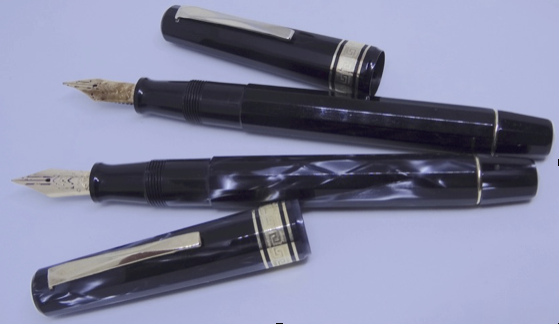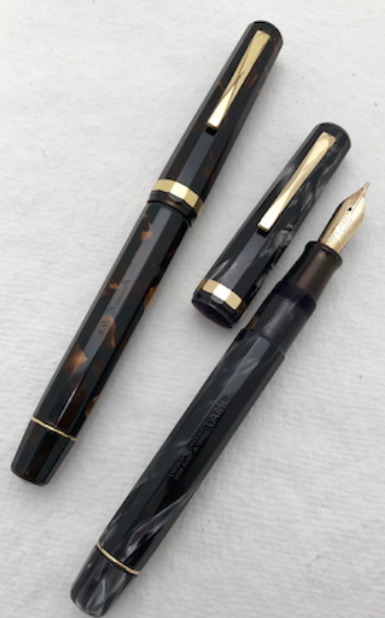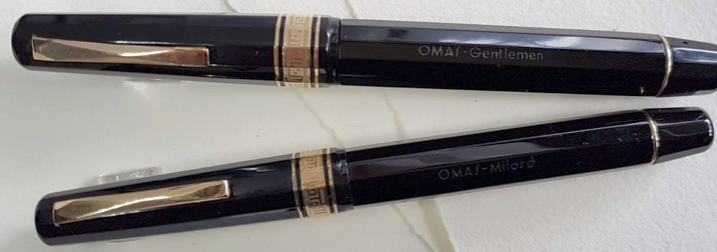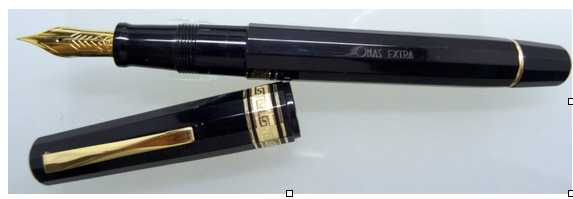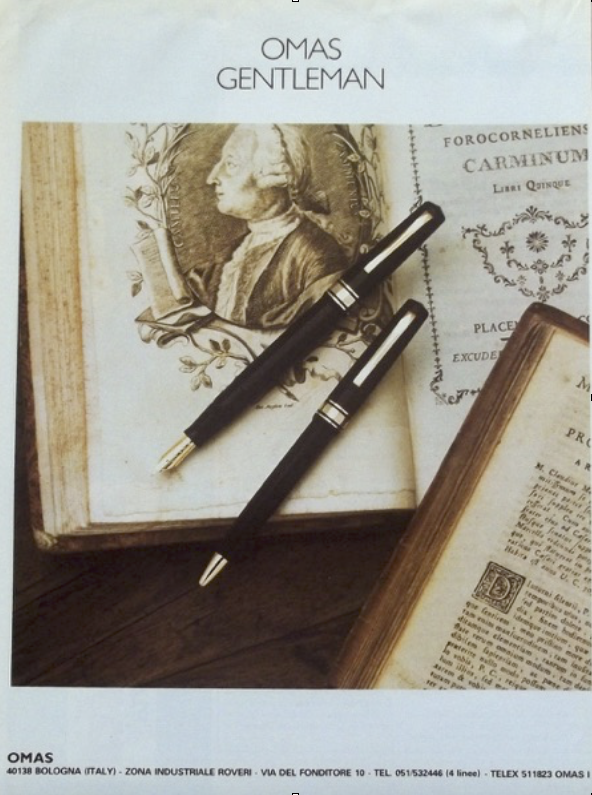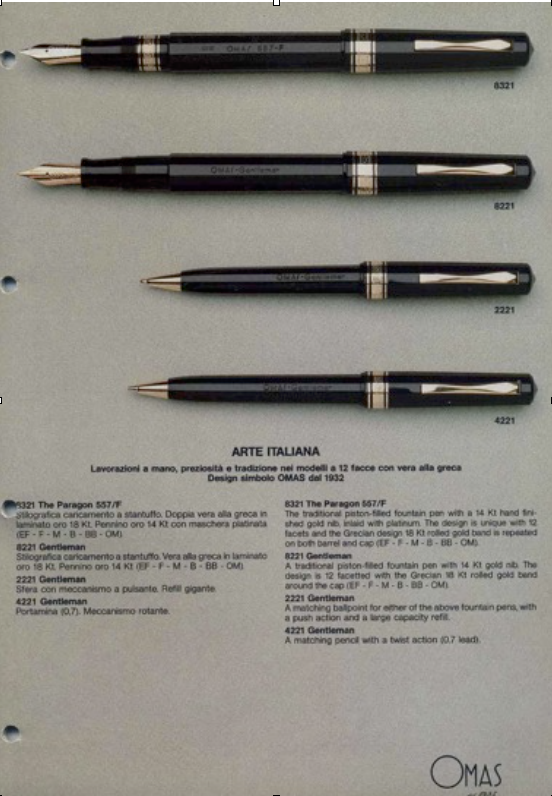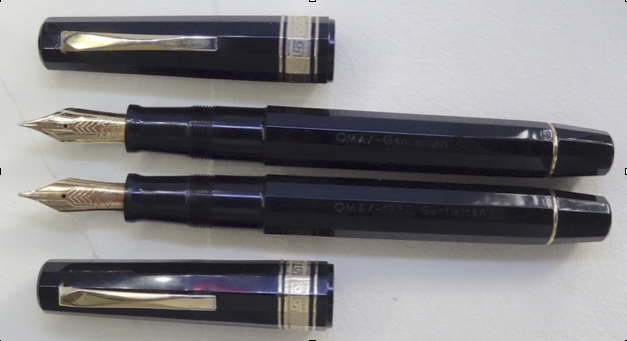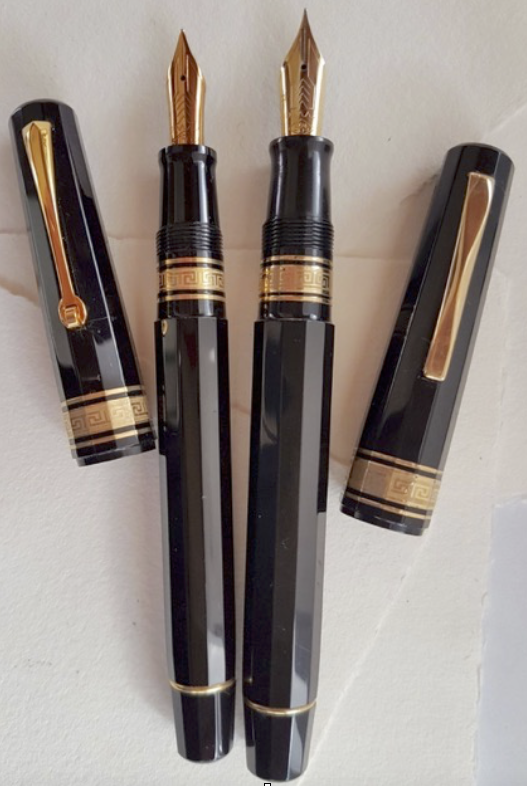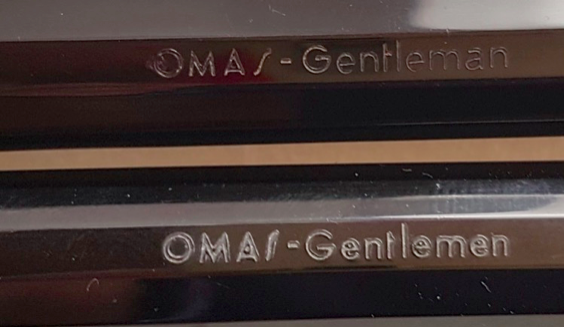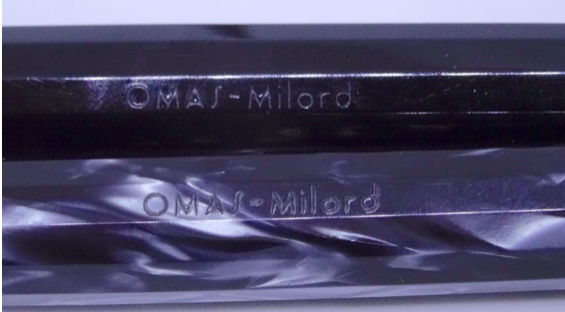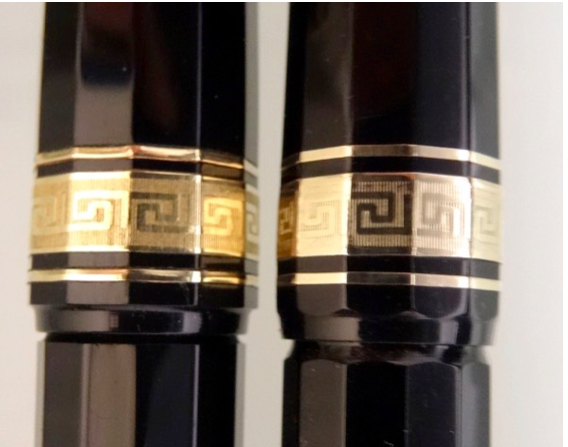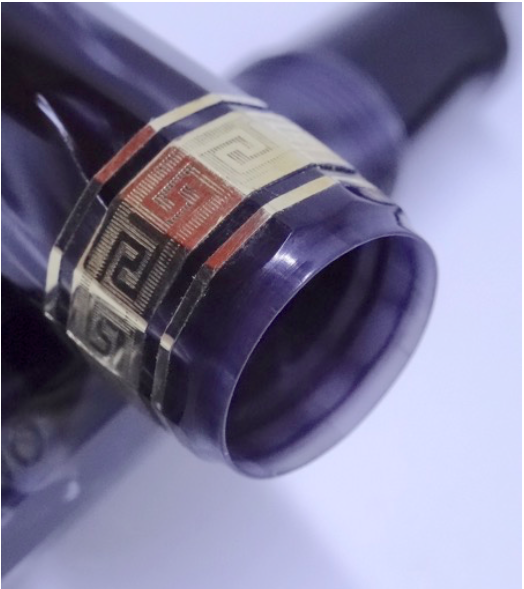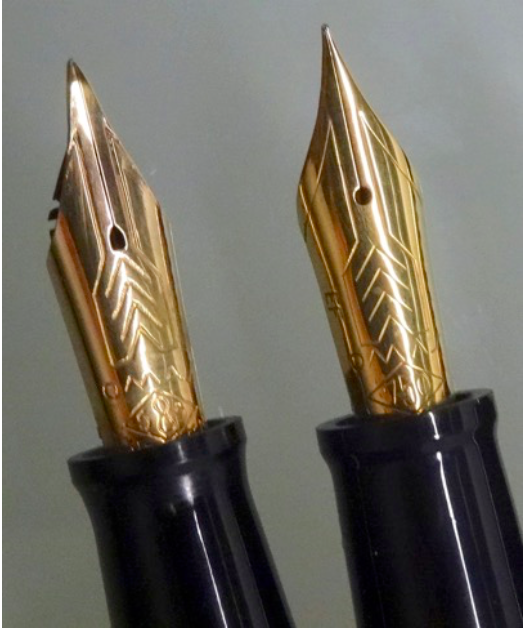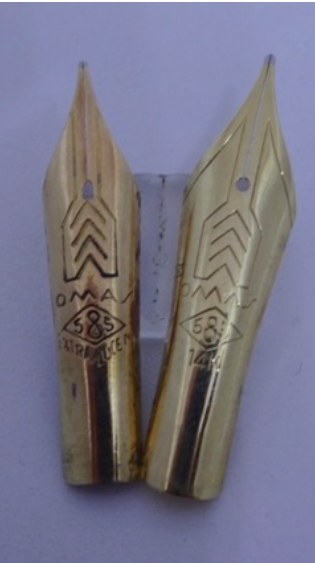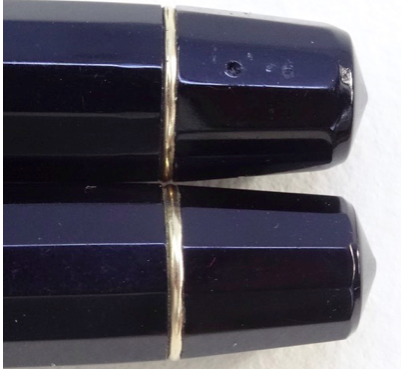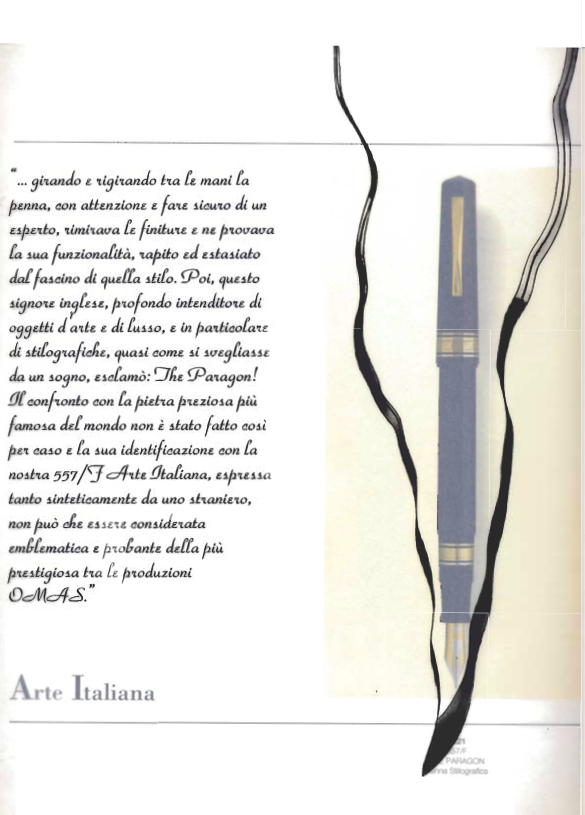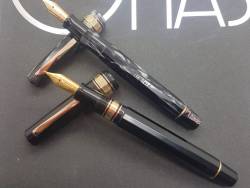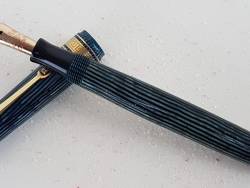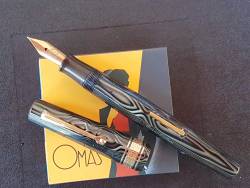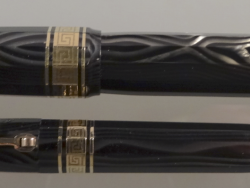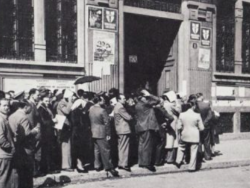From Milord to Paragon
AN UNWRITTEN CHAPTER IN OMAS’ HISTORY
Filling the Information Gap
After checking all the available sources of information, the OMAS book by Emilio Dolcini, my own book History of the Italian Fountain Pen, various publications and magazines, surfing the net and reading posts in every possible pen forum and blog, I finally reached the definitive conclusion that there is an information gap in the history of Omas pens, and that gap needs to be filled.
Every passionate collector of Omas knows they produced pens in celluloid and then shifted to vegetal resin in the early 1980’s. The most famous Omas model in vegetal resin, meant to be the top the line at the time, was the Paragon, which was fitted with two Greek Key bands, one on the cap and one on the grip section.
But, where does the Paragon come from and, above all, which pens were the ancestors of the Paragon?
Emilio Dolcini’s book, so far the most complete work on Omas pens, simply does not mention the facetted models, produced from the late 1960’s to the 1980’s, that paved the way to the Paragon.
The only model that he mentions in this time frame is the Milord, thus leaving several Omas facetted models without their place in history. The range of facetted Omas piston fillers produced then was in fact wider!
Figure 1 – Omas Milord from the late 1960s in gray and black celluloid
But let’s start from the beginning!
In the 1950s, when Omas rejuvenated its production lines, introducing the 55X series, both cylindrical and facetted, it set the stylistic and technical bottom line which would lead, some 20 years afterwards, to the birth of the Paragon. The 55X/F line was the top of the range and it had very high quality standards. The main features were: diamond shaped straight clip, celluloid facetted body, and an Omas Extra Lucens 14 ct. nib.
The nib used on this line was exactly the same as the nibs used for the Extra Lucens series of the late 1930’s. These nibs are top quality with high resiliency and a superb feel on paper.
The direct connection with the Extra Lucens models is shown also by the presence of the barrel imprint on the 55X/F models, which is the same as on 1930’s Extra Lucens pens.
Although very serious looking and produced only in black, gray pearl and tortoise brown, these pens are fantastic writers and among the most reliable models in a still affordable price range.
Figure 2 – Omas 55X/F pens from the 1950s.
The 55X and 55X/F line, along with the Lucens Ogiva and the 361 model (these were the top lines of the late 1950’s) performed well in the market until a restyling of the line became necessary.
In 1968 Omas introduced a new top-of-the line model, the Milord, a facetted celluloid pen with a Greek Key cap band, which sort of went against the trend of the time. The market was actually on the move towards injection plastic and streamlined, with more up-to-date designs. The Milord was instead the traditional model, made in facetted celluloid (only in black and gray), and it retained the superb Extra Lucens nib.
FIGURE 3 Omas Milord and Omas Gentlemen
Dolcini only mentions the Milord but this model was not the top of the range. The Milord was actually marketed along with a bigger model, with the same features and in the same colors, which was more suitable for masculine hands: the Gentlemen. It is a big pen whose role was to replace the 557 models; it was produced in gray pearl (very rare) and in black facetted celluloid and was fitted with the same vintage Extra Lucens nib.
This is the gap in the Omas history – Dolcini makes no reference to this precious, elegant and very beautiful model – the Gentlemen.
Milord and Gentlemen models from the ‘60s are today among the most desirable ‘modern’ Omas pens. They are still affordable, in comparison to super expensive Omas pens of the 1930’s and 1940’s, and are superb writers.
Figure 4 – Omas Gentlemen in gray celluloid
Milord and Gentlemen models remained on the market for more than a decade and became the modern symbol of Omas’ high quality standards in writing instruments.
Other models introduced in these years, like 72 Super, CS, and VS never gained the same popularity and appreciation as these two traditional jewels, which continued to be produced in celluloid.
In the early 1980s, it became evident that celluloid had to be abandoned in favor of injection moulding to reduce costs of production. Omas decided to safeguard its famous models and revised them to make them more modern and less expensive to produce.
The pistons were simplified, vegetal resin was adopted instead of celluloid and the beautiful Extra Lucens nibs from the past were replaced with modern ones. Model names remained partially unchanged: Milord did not change, while Gentlemen, became Gentleman.
There are however a few examples of Gentlemen pens in vegetal resin which can be considered as transitional models, the name is the same as older celluloid models but they are identical in material, shape and technical structure to Gentleman pens.
Figure 5 – Omas Milord from the 1980s in vegetal resin
At first sight the differences between the old time celluloid Milord/Gentlemen and the modern Milord/Gentleman in vegetal resin can hardly be noticed, but an expert eye and a sensitive hand can immediately distinguish the modern plastic models from the vintage celluloid ones.
The Milord remained in production through the 1990’s with a few variations in the imprint on the barrel. The model was named Milord, Extra, and Extra 1930, yet it always was the same pen.
Figure 6 – Omas Gentlemen pens in vegetal resin (top) and in celluloid (bottom). The new model is slightly larger than the celluloid pen it replaces.
The Gentleman remained in production, becoming ‘Gentleman 1930’ with no variations in style and design. Just like the way the old time Gentlemen was paired with the celluloid Milord, the new 1930 Gentleman was matched with the Extra 1930 (the new name for the Milord model).
The model was finally revised with the addition of a Greek Key band on the grip and renamed 557/F, soon to become the top model of the Collezione Arte Italiana, which was introduced in 1984.
The first series of the 557/F had two Greek Key bands, one on the cap and the other on the grip. The pens were initially numbered but the numbering system soon was abandoned.
When the Paragon was introduced in 1984, Omas catalogues offered both the 557/F, named the Paragon, as top of the line and the Gentleman, which was less expensive.
The new Omas jewel actually was an upgraded 557/F, being of the same size and design. It was however fitted with a two-tone nib as the leading model of the Collezione Arte Italiana. The line was comprised of: the 557/F, the Paragon, the Omas Gentleman, and the smaller sized models which retained the Omas 1930 model name, which were actually the Milord and the Lady size 555. All models had matching ball pens and pencils.
In the early 1990s, the Omas 1930 models were discontinued and catalogues only featured: 557/F Paragon (with the “Extra” imprint in capital letters on the barrel) , 557/F Gentleman, 556 (medium size), and 556b ( Lady size).
Fig. 9: Omas Getleman and Omas 1930 Gentleman, actually no remarkable difference between the two models.
In 1997 Omas finally adopted the traditional looking roller clip for the Paragon models and started using it on the Milord series, as well.
This transition is important as it sets the standards for years to come with the Paragon as the big model and Milord as the medium size one. The name Gentleman was abandoned.
Figure 10 – The roller clip that had been used in the 1930s was re-introduced in 1997.
Is it celluloid or resin?
At this point, we know the story but we need to know how to distinguish old time, high quality Gentlemen and Milord models in celluloid from more recent Milord and Gentleman models of the 1980’s. This can be difficult as the model appears to have remained unchanged over the years, but there actually are many details, which testify to the passage from celluloid to resin.
It is easier with the larger models because the name changed slightly as shown on the barrel imprint. The older celluloid pens have the “Gentlemen” imprint, while modern resin pens have “Gentleman”.
FIG. 11 imprints on Gentleman ( resin) and Gentlemen (celluloid)
Even the most experienced collector may have trouble finding out if a black facetted Milord is celluloid or vegetal resin.
It is true that celluloid is supposed to smell of camphor a bit if you rub it. However, you do not always have the opportunity to do so before deciding to buy a pen.
The easiest and most reliable way is to look at the facets of the cap. Injection moulding resulted in straight lines at the edge of the facets, while celluloid was hand finished resulting in slightly rounded edges.
Figure 13 – The vegetal resin on the left has crisper facets than the celluloid on the right.
The shape of the section can be another reference, as celluloid sections end with a thinner flare.
Figure 15 – The celluloid section has a thinner flare that the later vegetal resin section.
Left: Milord in celluloid with vintage 14-carat nib.
Right: milord in vegetal resin with modern 18-carat nib (late 1990’s)
The nib is another clue. Older Gentlemen and Milord pens have the 1930’s style Extra Lucens nibs while later models have modern ones. One difference is the shape of the vent hole, which is like a teardrop in vintage style nibs, and is round in the newer nibs. The outline line of the arrow also is different. The quality of writing also is an aspect, which is not immediately visible, but vintage nibs provide flexibility beyond comparison.
Figure 16 – In the early 1980s, the nib with a round vent hole (right) replaced the vintage style nib (left) with the teardrop vent hole. Note the difference in the arrow design.
With the passage from celluloid to vegetal resin, Omas also changed the piston unit, which is no longer held in place by a pin passing though the turning knob. This means that celluloid Milord and Gentlemen pens have a pierced turning knob, while modern resin pens do not.
Figure 17 – Note the pierced turning knob in the celluloid pen ( top), while the vegetal resin one is not pierced ( bottom).
I will end this story with a few words about the ‘Paragon’ name that Omas chose for its top-of-the-line pens.
We do not know what led them to this name, however, it illustrates a long-standing understanding of the importance of having model names that worked well in various countries. For example, names like ‘Extra’ carried the same meaning across multiple languages, as ‘Milord’ and ‘Gentleman’ are immediately widely understood.
The name ‘Paragon’ fits that idea, too. In Italian and in English, it has the meaning of ‘the perfect example’ of something.
The term ‘paragon’ is used to indicate an example of something which works as a reference. A ‘paragon stone’ is a black smooth stone that has been used for centuries to test the purity of gold.
The etimology of this word comes from the Greek verb “parakonào”, which means ‘to rub’. To identify gold, the pure metal is in fact rubbed on the paragon stone, leaving a shiny residue on the black stone. That is used to test gold purity, or distinguish gold from non-precious metals.
In this way, the name Paragon becomes the reference for “purity and perfection” for all other pens which will have to be compared to it.
It seems therefore fitting that we remember the Paragon as the perfect example of a modern pen.
Credits:
This article has been written in collaboration with my friend Jack Leone.
Online references: fountainpennetwork
Personal collection


